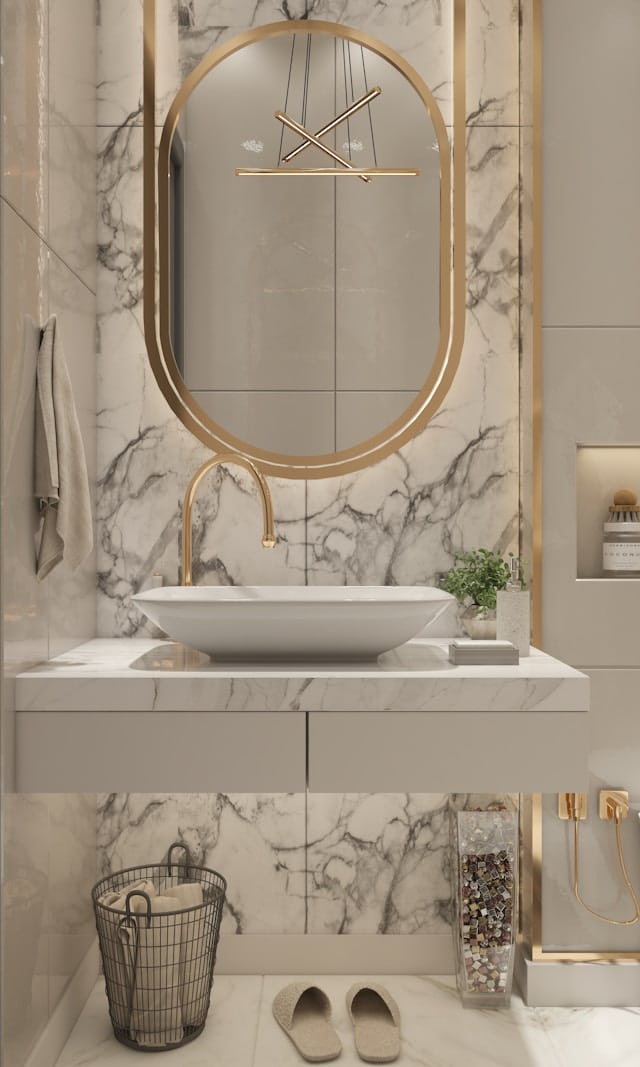What’s the Optimal Desk Setup for Reducing Eye Strain in a Home Office with Limited Natural Light?

Today, a vast number of people are adapting to the reality of working from home. With many confined to offices with limited natural light, it’s essential to create a workspace setup that minimizes eye strain and boosts productivity. Whether you’re working at a desk with a computer monitor, or from a laptop in your living room, there are strategies to enhance your workspace lighting and keep your eyes healthy. This article will provide you with knowledge to help you achieve the best ergonomic setup possible.
Optimizing Office Space and Desk Setup
The configuration of your home office can significantly impact your productivity and eye health. While it may seem tempting to work from the comfort of your bed or the couch, you’ll benefit more from a proper desk, chair, and monitor setup.
A lire aussi : How to Select the Perfect Eco-Friendly Sofa Upholstery for a Family with Young Children?
When setting up your workspace, consider the placement of your desk. It should be in a location that receives as much natural light as possible. However, with limited natural light, strategically placed artificial light will help fill in the gaps. As for your desk, an ideal choice would be one with a matte surface to reduce glare.
Your chair is equally important. An ergonomic chair will not only support your posture but also help you maintain the correct distance and eye level with your screen, reducing the chances of eye strain.
Dans le meme genre : How Can You Create a Dedicated Virtual Reality Gaming Space in a Rec Room?
Moreover, the arrangement of items on your desk should also be thoughtfully planned. Keep frequently used items within reach to minimize unnecessary movement.
Importance of Monitor Position and Screen Adjustment
One of the biggest culprits of eye strain is improper monitor placement and screen adjustment. Your monitor should be at a comfortable viewing distance, typically about an arm’s length away. The top of the screen should be at or slightly below eye level. This setup allows you to view the screen without bending your neck.
Adjusting your screen settings can also help reduce eye strain. Opt for a resolution that is comfortable to your eyes, and adjust the font size if necessary. Avoid extreme brightness or contrast levels, which can cause your eyes to work harder than they need to.
Consider using an adjustable monitor arm. This product will allow you to easily tweak the height and angle of your screen for optimal viewing comfort.
Incorporating Adequate Lighting
When working with minimal natural light, artificial light becomes more important. However, the wrong kind of lighting can increase eye strain. The best type of light for a workspace is diffused, indirect light. This prevents glare on the monitor, which is a common cause of eye strain.
Desk lamps with adjustable brightness are a good investment. They provide targeted lighting where you need it most. Consider a lamp with a swing arm for flexibility, and aim the light at your work, not your screen.
Position your desk and monitor to avoid reflections from overhead lighting. If necessary, use blinds or drapes to control the amount of light coming from windows.
Taking Breaks and Eye Exercises
Even the best office setup won’t protect your eyes if you’re not taking regular breaks. The human eye isn’t designed for prolonged focus on a single, close-up object, like a computer screen. Adhering to the 20-20-20 rule can help: every 20 minutes, look away from your screen and gaze at something 20 feet away for 20 seconds.
During these breaks, try some simple eye exercises. Blink repeatedly to refresh your eyes, or gently massage your eyelids and muscles around the eyes to relieve tension.
Choosing Tools and Accessories for Eye Protection
Finally, consider investing in tools and accessories specifically designed to minimize eye strain. Anti-glare screen protectors can help mitigate glare from your monitor. Computer glasses with yellow-tinted lenses can increase contrast and help block out the blue light from screens that can lead to eye fatigue.
Some digital platforms and devices offer a "night mode" or "reading mode" setting that adjusts color temperature, reducing the amount of blue light emitted.
Remember, everyone’s eyes are different, and what works best for one person may not work for another. It might take a bit of trial and error to find your perfect workspace setup. But with the right approach, you can create a comfortable, productive workstation that also safeguards your eye health.
Utilizing Light Sources to Enhance Workspace Lighting
Harnessing the right kind of light can be crucial when curating a home office setup designed to reduce eye strain. Given a scenario with limited natural light, it becomes even more critical to consider your light sources meticulously.
Start by examining the available light in your workspace. If you have windows, even small ones, be strategic about your desk setup. Place your desk in a position that maximizes the intake of natural light, without causing direct sunlight to hit your computer screen, leading to glare.
However, depending solely on natural light might not be feasible throughout the day. Therefore, the incorporation of artificial light plays a significant role in your office lighting setup. Avoid harsh, direct light from fixtures as this can cause shadows and glare, leading to increased eye strain. Instead, aim for soft, indirect light that evenly illuminates your workspace.
A well-chosen desk lamp could be your key ally in this regard. Look for a lamp that offers adjustable brightness, allowing you to control the intensity of the light depending on the time of day and your task at hand. Additionally, a desk lamp with a swing arm provides flexibility, enabling you to direct light exactly where you need it.
To further optimize your office lighting, look for light bars or bulbs that offer adjustable color temperatures. This will help in neutralizing the effect of blue light emitted from your computer screen, which is known to contribute to eye fatigue.
Conclusion: Creating a Comfortable and Eye-Friendly Home Office Environment
In the current era, where working from home has become a norm, it’s vital to create an office setup that promotes productivity and protects your eye health. Given the constraints of limited natural light, strategic utilization of your workspace and desk setup becomes even more crucial.
Placing emphasis on your desk location, chair choice, monitor placement, and appropriate lighting can significantly alleviate eye strain. Implementing tools like anti-glare screen protectors, adjustable light bars or desk lamps, and computer glasses can offer further protection.
Moreover, remember to take regular breaks and do eye exercises to give your eyes the rest they need. It’s equally important to listen to your body and adjust your workspace as required.
While it may require some trial and error to establish the perfect workspace for you, investing this effort can yield a more comfortable and productive work environment that will help protect your eyes in the long run. As the saying goes, "prevention is better than cure", and it couldn’t be more accurate when it comes to protecting your eyes from the potential hazards of a poorly lit home office.
